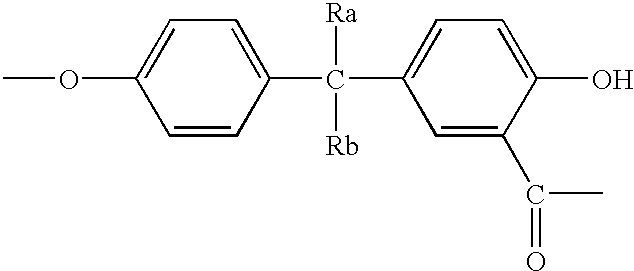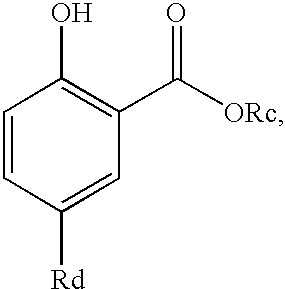Method and apparatus for in situ determination of molten polycarbonate composition using electronic absorption spectroscopy
a technology of electronic absorption spectroscopy and in situ determination, applied in the direction of optical radiation measurement, instruments, spectrometry/spectrophotometry/monochromators, etc., can solve problems such as differences in physical properties, such as flow and ductility, and can affect the formation of fries rearrangement products during melt polymerization, so as to improve signal resolution
- Summary
- Abstract
- Description
- Claims
- Application Information
AI Technical Summary
Benefits of technology
Problems solved by technology
Method used
Image
Examples
example 2
Multivariate Quantitation of Fries Product in Molten Melt Polycarbonate Material
A partial least squares (PLS) regression model was developed to explain the variation in collected spectra as a function of Fries concentration. Actual levels of Fries products were measured by liquid chromatography as described for Example 1. PLS models were validated using standard methods of leave-one-out cross-validation (CV) (Beebe, K. R., et al., Chemometrics: A Practical Guide; Wiley: New York, N.Y., 1998) after appropriate preprocessing. In this example, preprocessing consisted of selecting the spectral range for multivariate analysis, base-line correction, and mean-centering of the data.
FIG. 5 illustrates the plot of the first latent variable of the developed PLS model for a sequence of measured spectra. In this experiment, sample groups 1-5, 6-10, 11-15, 16-20, 21-25, and 25-30 each contained the same amount of Fries. It can be seen that that the variation in the first latent variable of the de...
example 3
Fault Detection in Fries Monitoring in Molten Melt Polycarbonate
Chemometric analysis may also be used to optimize normal operating conditions and predict outliers in the measured data. Principal component analysis (PCA) was used to generate a spectral descriptors plot using the spectra shown in FIG. 3B. For PCA, spectral data was arranged as a Fries concentration-absorbance intensity response matrix. Analysis of the data was performed using software from the PLS_Toolbox (Eigenvector Research, Inc., Manson, Wash.) operated with MATLAB.RTM. software (Mathworks Inc., Natick, Mass.). For the experiment shown, the data was preprocessed by mean-centering and the first and second principal components plotted.
FIG. 7 shows a PCA plot for the 46 spectra shown in FIG. 3B. For visualization on spectral plots, Fries values were combined to fall in distinct ranges. Thus, results for Fries products were grouped as follows: (.gradient.) 0 ppm (air), (<) 25 ppm, (O) 150 ppm and (.DELTA.) 280 ppm.
To ...
PUM
| Property | Measurement | Unit |
|---|---|---|
| temperature | aaaaa | aaaaa |
| temperature | aaaaa | aaaaa |
| temperature | aaaaa | aaaaa |
Abstract
Description
Claims
Application Information
 Login to View More
Login to View More - R&D
- Intellectual Property
- Life Sciences
- Materials
- Tech Scout
- Unparalleled Data Quality
- Higher Quality Content
- 60% Fewer Hallucinations
Browse by: Latest US Patents, China's latest patents, Technical Efficacy Thesaurus, Application Domain, Technology Topic, Popular Technical Reports.
© 2025 PatSnap. All rights reserved.Legal|Privacy policy|Modern Slavery Act Transparency Statement|Sitemap|About US| Contact US: help@patsnap.com



